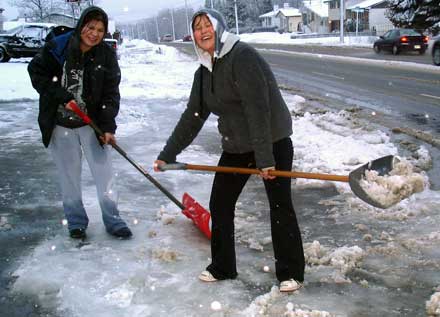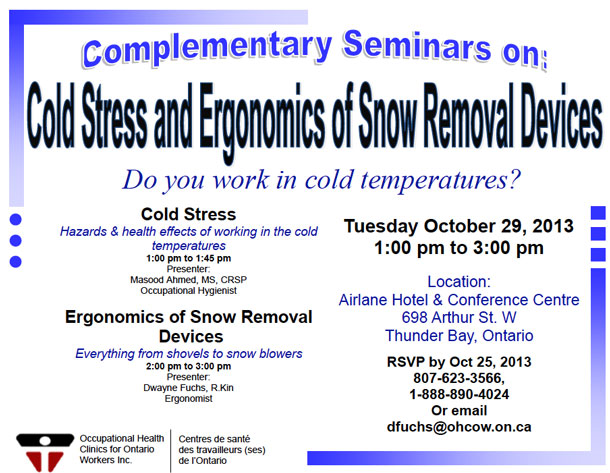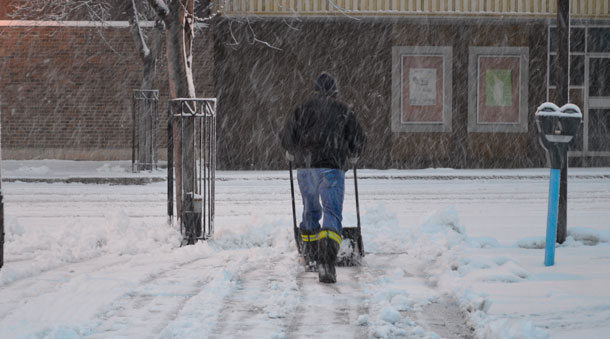
THUNDER BAY – Do you work in cold weather conditions? The cold of a Thunder Bay – Northwestern Ontario winter day impacts our ability to work, and can seriously impact health.
On October 29th from 1-4PM at the Airlane Hotel and Conference Centre, OHCOW will be hosting a seminar on working in cold weather.
The free sessions are open to all and will cover a number of the important issues concerning how cold weather impacts your health.
The Ontario Government states, “Working in extreme cold may stress a person’s heating system. When cold is combined with other stresses such as hard physical work, loss of fluids, fatigue or some medical conditions, it may lead to cold-related illness, disability and even death.
The Ministry of Labour state, “At very cold temperatures, the most serious concern is the risk of hypothermia or dangerous overcooling of the body. Another serious effect of cold exposure is frostbite or freezing of the exposed extremities such as fingers, toes, nose and ear lobes. Hypothermia could be fatal in the absence of immediate medical attention”.
The employer should implement a cold stress prevention program that establishes:
- worker training in the hazards, health effects and prevention of cold related illness;
- criteria or monitoring method (e.g. acting on wind chill warnings or cold alert notices by Environment Canada or measuring wind speed, and air temperature);
- a monitoring/sampling plan (e.g. when, where and what to measure or monitor);
- responses or preventative measures (e.g. dressing in proper layers of clothing, acclimatizing workers to working conditions and required protective clothing, establishing warm-up schedule, provide warm shelter, use buddy system, suitable equipment, pace of work to avoid sweating or low activity);
- a plan to provide warm sweet drinks and soups (increases caloric intake and prevents dehydration which may increase risk of cold injury); and
- first aid and emergency responses, including monitoring of worker symptoms, and investigating incidents of cold related illnesses.
Warning signs of hypothermia can include complaints of nausea, fatigue, dizziness, irritability or euphoria. Workers can also experience pain in their extremities (hands, feet, ears, etc.), and severe shivering. Workers should be moved to a heated shelter and seek medical advice when appropriate.















